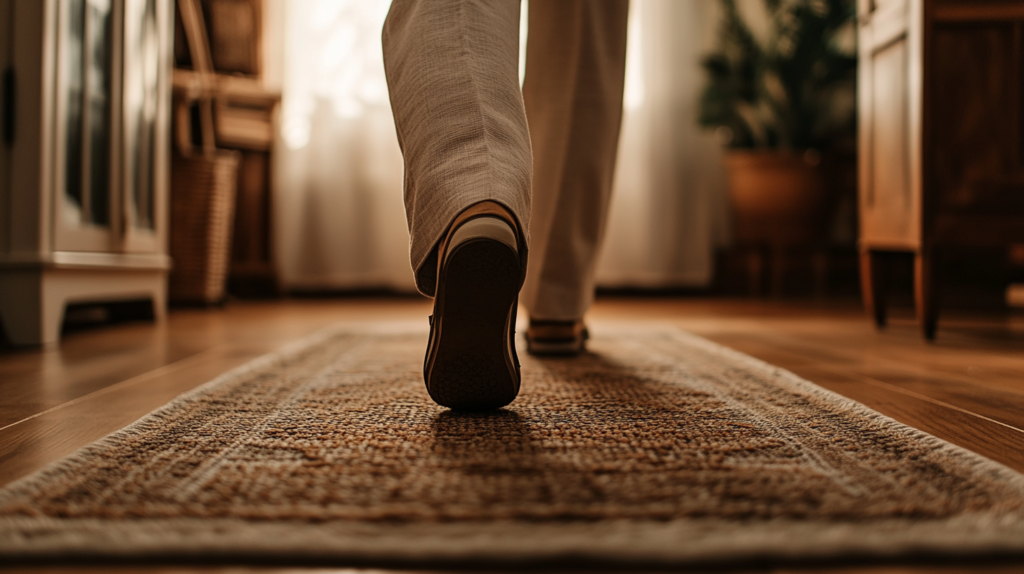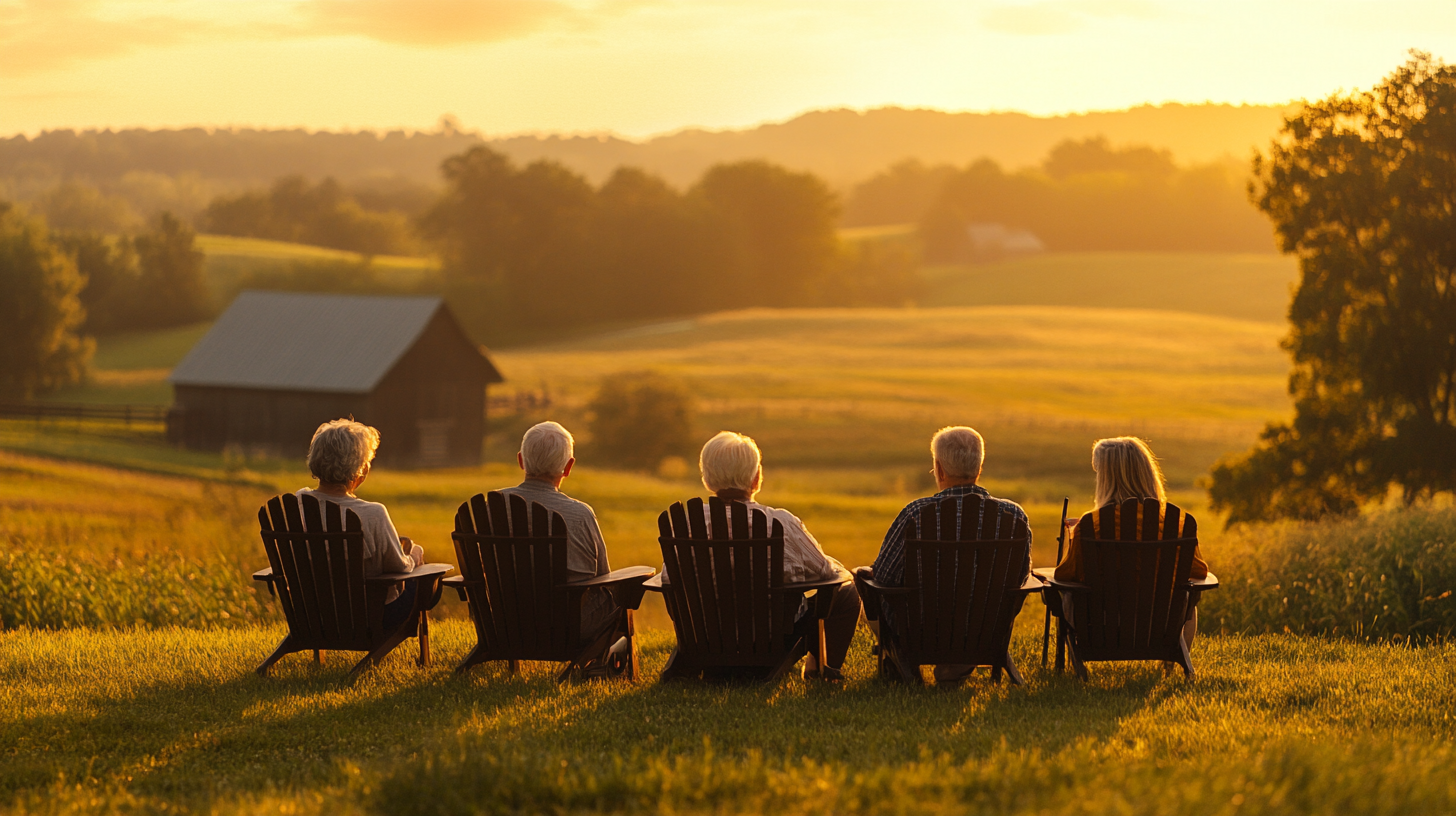Picture this: Your aging parent, who once moved around effortlessly, now hesitates at the top of the stairs or clutches the furniture while walking. It’s a subtle shift, but one that signals a growing risk—falls, the number one cause of injury among seniors. Falls aren’t just minor mishaps. They can lead to fractures, hospitalizations, and even a loss of independence. But here’s the good news: most falls can be prevented with a few simple adjustments at home. Let’s explore how you can turn your home into a fortress of safety without sacrificing comfort or independence.
Why Fall Prevention Matters More Than You Think
One out of every four seniors experiences a fall each year. And once a person falls, the risk of falling again doubles. The impact isn’t just physical—it can lead to loss of confidence, fear of movement, and even social withdrawal. Here’s the reality: A single fall can take away years of mobility and independence. The good news? You can reduce the risk dramatically with thoughtful home modifications, lifestyle adjustments, and proactive health care measures.
Step 1: Transforming the Home into a Fall-Free Zone
The home is where seniors should feel safest, yet 60% of falls occur indoors. It’s time to rethink the space and design for safety without making it feel like a hospital.
1. The Floor Plan Fix
- Declutter everything – No more throw rugs, tangled wires, or stacks of books on the floor. Clear pathways make movement easier.
- Non-slip mats or flooring – Hardwood and tile can be slippery; opt for carpeted surfaces or non-slip treatments.
2. Lights, Safety, Action!
- Brighten up the home – Shadows and dim lighting hide tripping hazards. Install motion-sensor night lights in hallways, bathrooms, and staircases.
- Use contrasting colors – A darker carpet against a light-colored floor can help seniors with depth perception issues.
3. The Bathroom Battle (Where 80% of senior falls happen!)
- Install grab bars near the toilet and shower for easy support.
- Use a raised toilet seat and shower chair for added stability.
- Switch to non-slip mats and remove slippery bath rugs.
4. Stairs & Hallways: The Danger Zones
- Install sturdy handrails on both sides of the staircase.
- Mark the edges of steps with colored tape for better visibility.
- If stairs become too challenging, consider a stairlift or relocating the bedroom to the main floor.
Step 2: Strength & Balance – The Invisible Shield Against Falls
A fall is often not just about tripping over something—it’s about the body’s ability to react quickly. If a senior lacks muscle strength, balance, or flexibility, even the smallest stumble can lead to a full-blown fall.
1. Simple Exercises That Work Wonders
Encourage seniors to stay active with:
- Chair yoga for flexibility
- Tai Chi for balance and coordination
- Leg strengthening exercises like seated leg lifts and standing heel raises
2. Check Those Eyes & Ears!
Seniors with vision or hearing issues are more likely to misjudge distances or fail to hear something that could alert them to danger. Annual checkups for vision and hearing can prevent missteps.
3. The Right Shoes = The Right Steps
- No flip-flops, loose slippers, or high heels!
- Shoes should be sturdy, low-heeled, and have non-slip soles.
Step 3: Medication & Health Check-Ups – The Silent Culprits
Did you know that certain medications can make seniors dizzy or drowsy? Some blood pressure pills, sleep aids, and even over-the-counter antihistamines increase the risk of falls.
1. Medication Review = Fewer Falls
- Work with a doctor or pharmacist to review all medications.
- Avoid combining medications that cause drowsiness or dizziness.
2. Stay Hydrated
Dehydration can lead to low blood pressure, causing sudden dizziness and falls. Encourage seniors to drink plenty of water throughout the day.
Step 4: The Power of Technology in Fall Prevention
We live in an era where technology can help save lives.
1. Wearable Safety Devices
- Medical alert systems ensure help is just a button press away.
- Smartwatches with fall detection (like the Apple Watch) automatically call for assistance if a fall is detected.
2. Home Monitoring Systems
- Motion sensors in key areas can alert caregivers to unusual movement patterns.
- Cameras (placed respectfully) allow remote monitoring without invading privacy.

Step 5: Having “The Talk” – Helping Seniors Accept Change
Here’s the hard part: Seniors don’t like to be told what to do. Many resist changes because they don’t want to feel like they’re “losing their independence.”
How to Approach the Conversation
- Instead of saying, “Mom, you need grab bars in the bathroom,” try:
“Mom, I found these really stylish grab bars that make getting in and out of the shower easier. Let’s try them out.” - Rather than “Dad, you can’t wear those slippers anymore,” say:
“Hey Dad, I found these really comfortable, slip-proof house shoes for you. Want to give them a shot?”
The key? Make them feel involved in the decision-making process.
Final Thoughts: Prevention Is a Gift, Not a Burden
At the end of the day, fall prevention isn’t about taking away independence—it’s about preserving it. Small changes today can mean more years of mobility, confidence, and joy.
Imagine your loved one moving through their home without fear, able to enjoy their daily routines with dignity and security. That’s the ultimate goal, and it starts with simple but powerful actions.
So, take a moment. Look around your home. What small changes can you make today to create a safer, fall-free future for your loved ones? Because every step matters. Literally.



